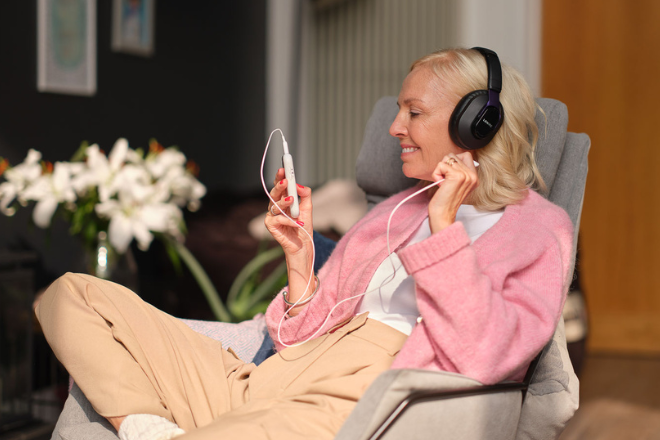A hearing aid is an incredibly personalized piece of medical equipment—it’s worn every day, on the head (one of the most sensitive parts of the body), it’s directly visible to others, and you rely on it for one of the five senses you have for making sense of the world.
When your audiologist first sets you up with a hearing aid, you’ll have a few days to wear it and decide if it’s indeed the right choice for you. Here are four things to watch for during that crucial trial period.
- Hearing improvement – the reason you wear your hearing aid is to help you hear better, and that’s clearly the most important aspect of the selection process. Do you find a dramatic improvement over not wearing the device (or, if you already wear one, your previous hearing aid)? Do you notice a reduction in listening difficulty? Is it easier to follow conversation? You should test the hearing aid in a variety of situations, from quiet conversation levels to louder environments (if you’re likely to encounter these in your day-to-day). Remember, the main reason for the trial period is so you can take the hearing device out of the office and into your day-to-day life, testing it in the types of situations you’re likely to encounter.
- Comfortable fit – you have to wear your hearing aid every day, so comfort is of the utmost importance. The human body can eventually get used to anything, but you’ll be much more comfortable if you start out with a well-fitting hearing device. Your audiologist should have already made some adjustments to ensure proper fit, but you’re the only one that can ultimately make the call whether the fit works or not.
- Technological integration – our modern lives include a variety of technologies we interact with on a daily basis. A key part of the usefulness of your hearing aid will be how easily it integrates with devices such as your mobile phone, your television, or any other pieces of technology you frequently use. The thing to look for is seamless integration that doesn’t require you to take too many extra steps to make the hearing aid-to-device connection and doesn’t detract from your enjoyment of the activity.
- Style – you should already have gone through your hearing device options (in-the-ear, behind-the-ear) with your audiologist, and depending on your hearing needs, you may have to stick to a particular type of hearing aid. With that being said, as you wear it around for a few days, you’ll have to decide whether this style works. If it does not, you will work with the audiologist to get a style that will work for you.
As you go through the trial period, take notes on any aspects of your hearing device you notice, good or bad, so you can share these with your audiologist during your next consultation.
Have a question about what types of hearing aids would be available for your particular type of hearing loss? We’re here to help! Contact us for more information!





